Swooping in from Brazil, this succulent is a lovely little gift to all. It is an absolutely adorable plant that should be in every succulent garden. It truly is remarkable how little leaves and stems can resemble tiny turtles strung together in a messy but quaint manner. Of all the types and varieties of succulents available, the string of turtles succulents is sure to become a favorite.
Caring for String of Turtles Succulent
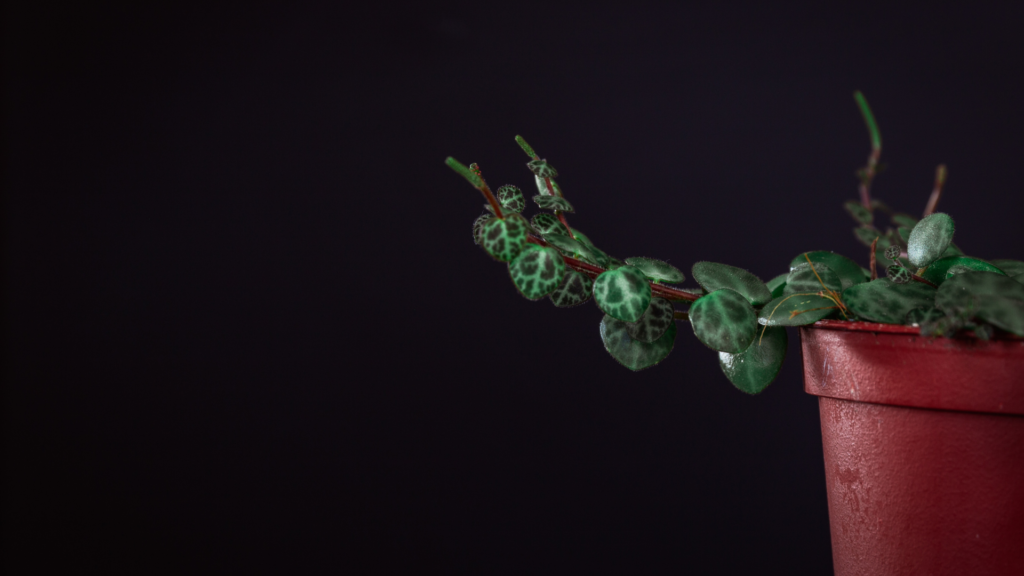
Most succulents need nearly the same type of care, but some do require a slight tweak to the general practices of succulent care. This particular variety is one of those. Let’s take some time to learn how best to care for these special and adorable plants.
Fertilizer Needs
The string of Turtles can be given fertilizer, especially during the warm growing season. Try fertilizing it with a diluted houseplant fertilizer every other week. Remember to only do this during the growing season; it will not be necessary during the fall or winter seasons.
Light Needs
While this little plant does need a lot of sunlight, it needs it to be indirect. Full sun will be too much for its delicate leaves to handle. If kept indoors, it will be best to set this plant in a north-facing or a south-facing window. It also grows well under artificial or fluorescent lighting. Just make sure that the top layer of soil also receives light.
Soil Needs
Unlike other succulents, String of Turtles does not need a soil mix made specifically for succulents and cacti. Instead, it needs an acidic soil rich in peat. This also means that it will be necessary to check the pH level of the soil to make sure it does not get too low. The pH level should range between 5 to 7.
Temperature Needs
Heat is another area where the String of Turtle succulents is different from other varieties of succulents. Rather than dry heat, these plants prefer cool humidity. The temperature range they grow best in is between 68- and 75-degrees Fahrenheit. Outside plants grow best in USDA hardiness zones 9 to 11.
Water Needs
Since this succulent hail from the Brazilian rain forest, their water needs are slightly different from other types of succulents. They don’t actually mind a little extra moisture and humidity. That being said, it can still get root rot from being overwatered.
The best way to water this plant is by the typical soak and dry method. To do this, soak the potted plant in a tray or tub of water for fifteen minutes, then allow it to drain through the holes in the bottom of the pot.
Another thing that these natives of the rain forest will need is some extra moisture and humidity. There are several different ways to provide these:
- Mist the plants with a spray bottle every few days
- Create a pebble tray
- Use a humidifier
- Use an essential oil diffuser as a humidifier
- Set up a small greenhouse or terrarium
- Keep the plants in your bathroom
Pros:
- It is a small plant that is perfect for decorating living spaces
- It grows well in artificial light
Cons:
- Watering it appropriately can be difficult, but it is essential for a healthy plant
- Its needs are different from other types of succulents
- It is toxic to animals
Recommended Alternatives or Companions
Perhaps String of Turtles just isn’t the succulent for you, or maybe, you would like some similar plants to serve as companions for your String of Turtles. If either of these situations applies to you, try one or several of these options.
String of Bananas
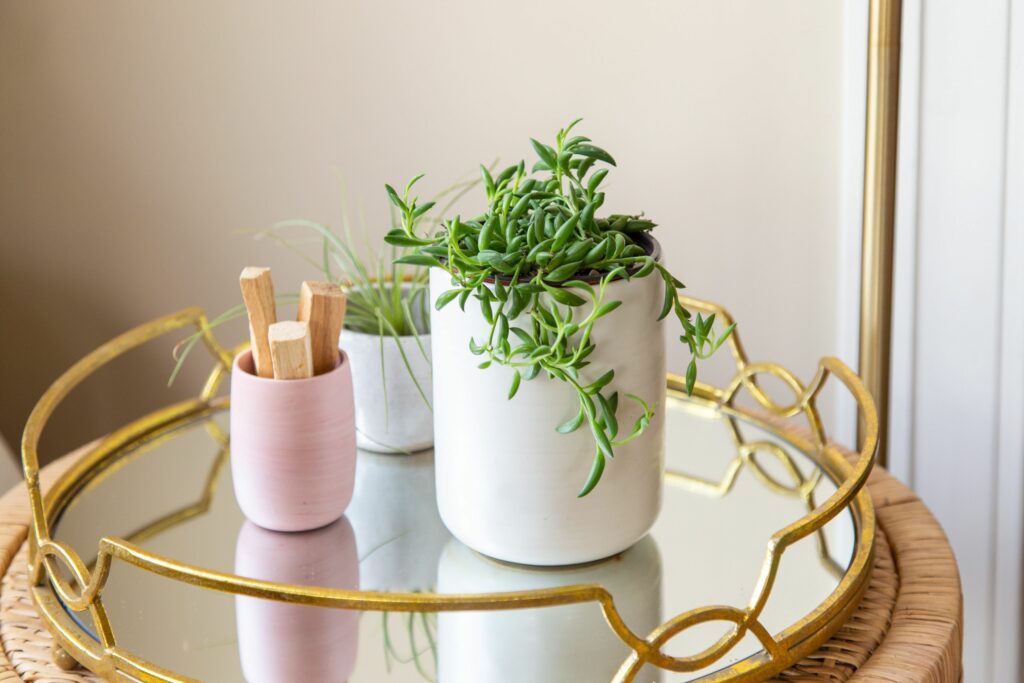
Yes, this little succulent looks like bunches of bananas on a string. It is a dainty little thing that will bring a peaceful warmth to any room or garden space.
Fertilizer Needs
The only time this succulent will need to be fertilized is during its growing seasons, spring and summer. It is often recommended that worm compost, liquid kelp, or other types of organic fertilizers be used.
Light Needs
When kept indoors, String of Bananas will require six hours of direct sunlight. It also does well under grow lights.
Soil Needs
The soil needs of this succulent are typical of all succulents. Any premixed cacti or succulent soil mix will work as long as it drains well.
Water Needs
The string of Bananas are drought tolerant and should not be overwatered so as to prevent root rot. As with any succulent, check the soil around the plant before watering it. Only water it if the soil is dry.
Temperature Needs
This succulent prefers hot and dry temperatures and will not tolerate cold weather well.
Pros
- It is easy to grow and care for
- It is drought tolerant
Cons
- It is toxic to humans and animals
- It is temperature-sensitive
- It is easy to overwater
String of Dolphins
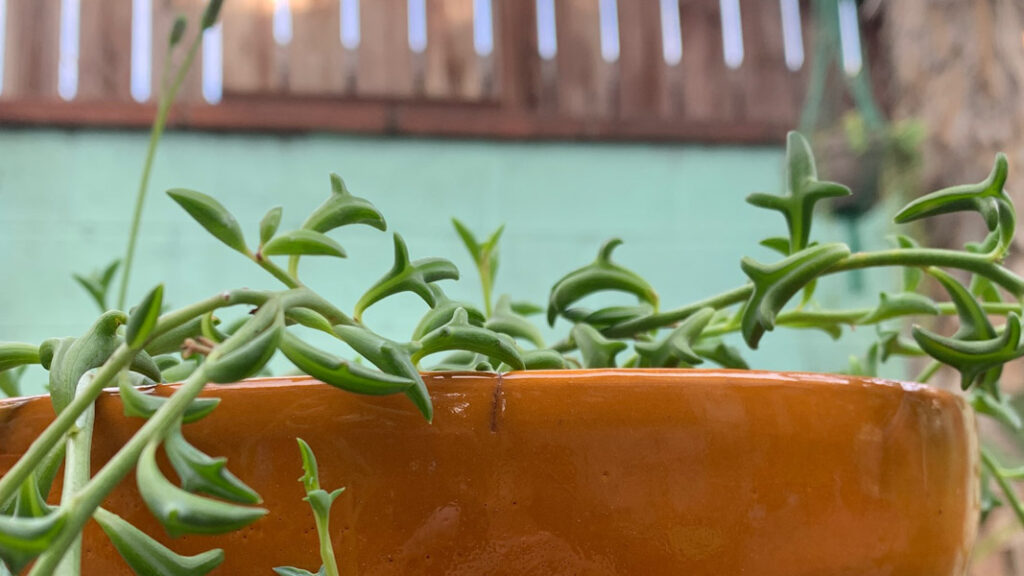
If you want a playful plant to sit alongside your String of Turtles, this is the perfect one to choose. It also lives up to its name and looks like a pod of tiny dolphins jumping and playing. What more could ask for in a plant?
Fertilizer Needs
These succulents do not need regular fertilizing but can benefit from light feedings in the early spring season.
Light Needs
Direct sunlight will burn the leaves of this plant so it is best to set it in a place where it will get medium amounts of light. If it isn’t getting enough light indoors, use some grow lights to provide it with the additional light it requires.
Soil Needs
Simply provide this succulent with a well-draining succulent/cacti soil mix.
Temperature Needs
These succulents do not tolerate frost or cold weather well. They will grow their best when kept in temperatures higher than 40 degrees Fahrenheit.
Water Needs
Just like any other succulent, this plant is drought tolerant and easy to overwater. Always test the soil to make sure it is dry before giving it a drink, and always make sure excess water is drained out of its container.
Pros:
- It is easy to grow and care for
- It makes a unique looking decoration
Cons:
- It is easy to overwater
- It is toxic to humans and animals
String of Rubies
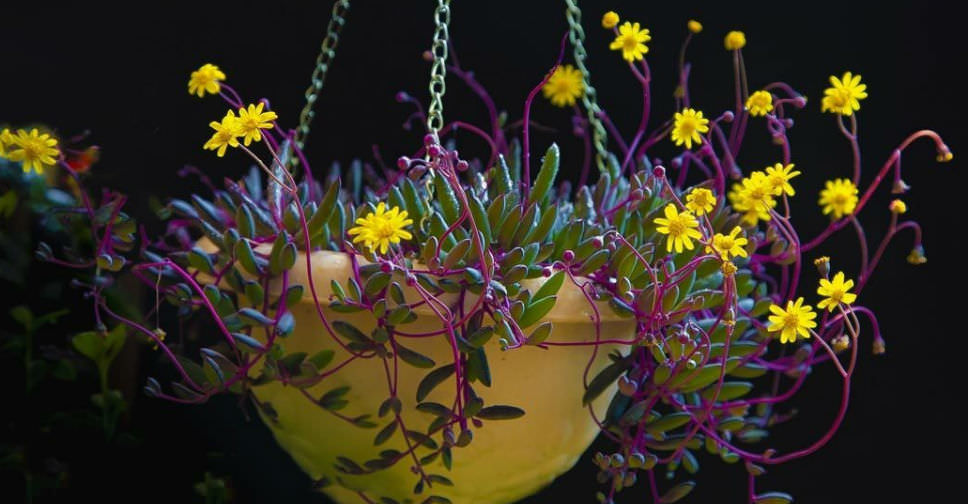
This petite trailing succulent is beautiful in its own right, but give a little healthy stress and it will turn into an even more beautiful plant with vibrant red leaves. It is this unique look and it’s easy to care for nature that will make it the perfect companion to String of Turtles.
Fertilizer Needs
The string of Rubies may benefit from a low-nitrogen fertilizer in the spring and summer seasons, but otherwise, it will not need much fertilizing.
Light Needs
This succulent has varying light needs that depend on where it is placed. If it is kept indoors, it will need a lot of direct sunlight or a strong grow light. If kept outside, it will do best with full sun to partial shade.
Soil Needs
Regular soil mixes designed for succulents will work well for String of Rubies. Just make sure the pH level of the soil ranges between 6.0 and 6.5.
Temperature Needs
This succulent does not tolerate cold weather well and should not be left in temperatures lower than 50 degrees Fahrenheit.
Water Needs
The string of Rubies is a drought-tolerant succulent that can easily be overwatered so it is essential that it is only watered when the soil around it is dried. It is also essential that the soil it is planted in be allowed to drain.
Pros:
- It is easy to replant
- It is easy to propagate
- It is easy to care for
Cons:
- It is sunlight and temperature-sensitive
- Its toxicity has not been listed
String of Pearls
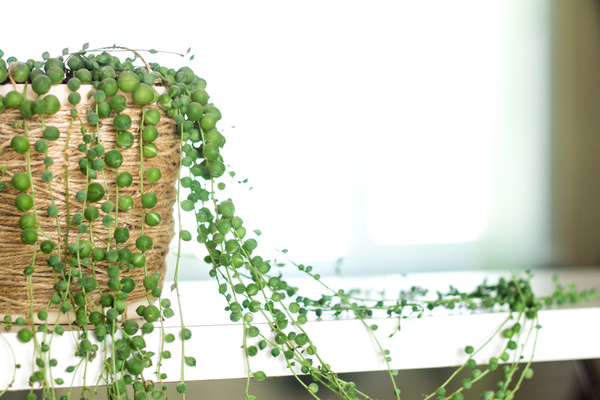
This is another trailing succulent that looks beautiful in hanging planters. The reason it will make for a friendly companion or alternative to String of Turtles is that it requires similar care.
Fertilizer Needs
As with most succulents, String of Pearls does not require a lot of fertilizer. It may be a good idea to give it a little fertilizer every few weeks during the warm growing seasons of spring and summer, but otherwise, it doesn’t need it.
Light Needs
Provide this succulent with bright but indirect sunlight. It can also grow under artificial or fluorescent lighting.
Soil Needs
A string of Pearl plants will need a different type of soil than String of Turtles. Fortunately, this is an easy difference to accommodate. Simply keep String of Pearls in a succulent potting mix that is well-drained.
Temperature Needs
Cool to warm temperatures is what this succulent prefers. They grow best in temperatures ranging between 55- to 80- degrees Fahrenheit.
Water Needs
When it comes to water, this succulent is just like every other succulent: it does not need a lot. Always check the soil around this succulent before watering it and only water it when the soil is dry. Make sure the soil drains well to prevent root rot.
Pros:
- It is easy to grow and care for
- It makes a lovely looking house decoration
Cons:
- It can easily be overwatered
- It is sun and temperature-sensitive
- Its sap is toxic to humans and pets
FAQs
Question: Do String of Turtles Grow Fast?
Answer: No, these succulents are slow-growing. They will reach full maturity (up to 12 inches) in three to five years.
Question: Is String of Turtles Toxic?
Answer: Unfortunately, these succulents can be toxic to pets. To prevent any injuries to your favorite animal friends, it is advised that you keep your String of Turtle plant on a shelf, in a room, or in an area that is out of their reach.
Question: Should String of Turtles be Pruned?
Answer: Because this plant grows long trailing stems, it may seem like a necessity to prune it regularly; however, this is not the case. Occasionally, a stem or some leaves may rot and need removal, but this plant does not need regular trims.
Question: Can String of Turtles be Replanted?
Answer: Yes, these succulents are slow growers and have shallow roots, qualities that lend themselves to easy replanting. Replanting these succulents should not be necessary due to outgrowing a pot or planter since they don’t get very large; however, it is recommended that the potting soil it rests in is changed annually.
Question: Where Can String of Turtles be Purchased?
Answer: These succulents used to be more difficult to locate, but have recently become easier to find. Start your search with a local greenhouse, garden supply store, or Farmers Market. Shopping locally is a great community service and should be the first place you try.
If, however, you don’t find what you want, or the price is not friendly enough to your wallet, look online. Not only do online succulent shops offer good deals, but there are also many shops on Etsy that sell these lovely little succulents.
Question: How Can String of Turtles be Propagated?
Answer: If you are looking for a plant that is easy to propagate, look no further. The string of Turtles is easy to reproduce from stem cuttings. Simply cut off a healthy stem that includes a visible node with a clean knife or pair of scissors. Then, place the stem in compost or water to let it establish roots of its own. Later, it can be planted in a more permanent place.
Question: What Is the Best Way to Display String of Turtles?
Answer: This is a trailing plant, and therefore, it will look amazing in a hanging planter. Consider placing it in a hanging planter that is set in a sunny windowsill or from a rafter on a deck or porch. Wherever you decide to place, be sure it has plenty of room to show off its lovely trailing stems and leaves.
Question: Does String of Turtles Produce Flowers?
Answer: Most of the time this succulent does not produce any flowers; however, there are times when it does. The flowers it produces are cream-colored, odorless, and look like little spikes.
Some Closing Thoughts
Trailing succulents, such as String of Turtles, are a fun and charming way to fill blank spaces. They are perfectly suited for those high, empty areas of rooms. Not only are they design perfection, but they are also easy to care for and propagate. So, the next time you find yourself wondering how to make a room look and feel more fresh and inviting, try hanging a String of Turtles plant.
Read more related articles here:
- Cephalocereus Senilis (Old Man Cactus) How To Grow and Care 101
- Stapelia Gigantea (Zulu Giant): Plant Care Guide For Beginners
- Dioscorea Elephantipes (Elephant’s Foot): How To Grow Healthy Succulents
- Lophocereus Marginatus (Mexican Fence Post Cactus) - January 10, 2022
- Best Cactus Fertilizer Guide - January 9, 2022
- Selenicereus Grandiflorus (Queen of the Night) - January 3, 2022


